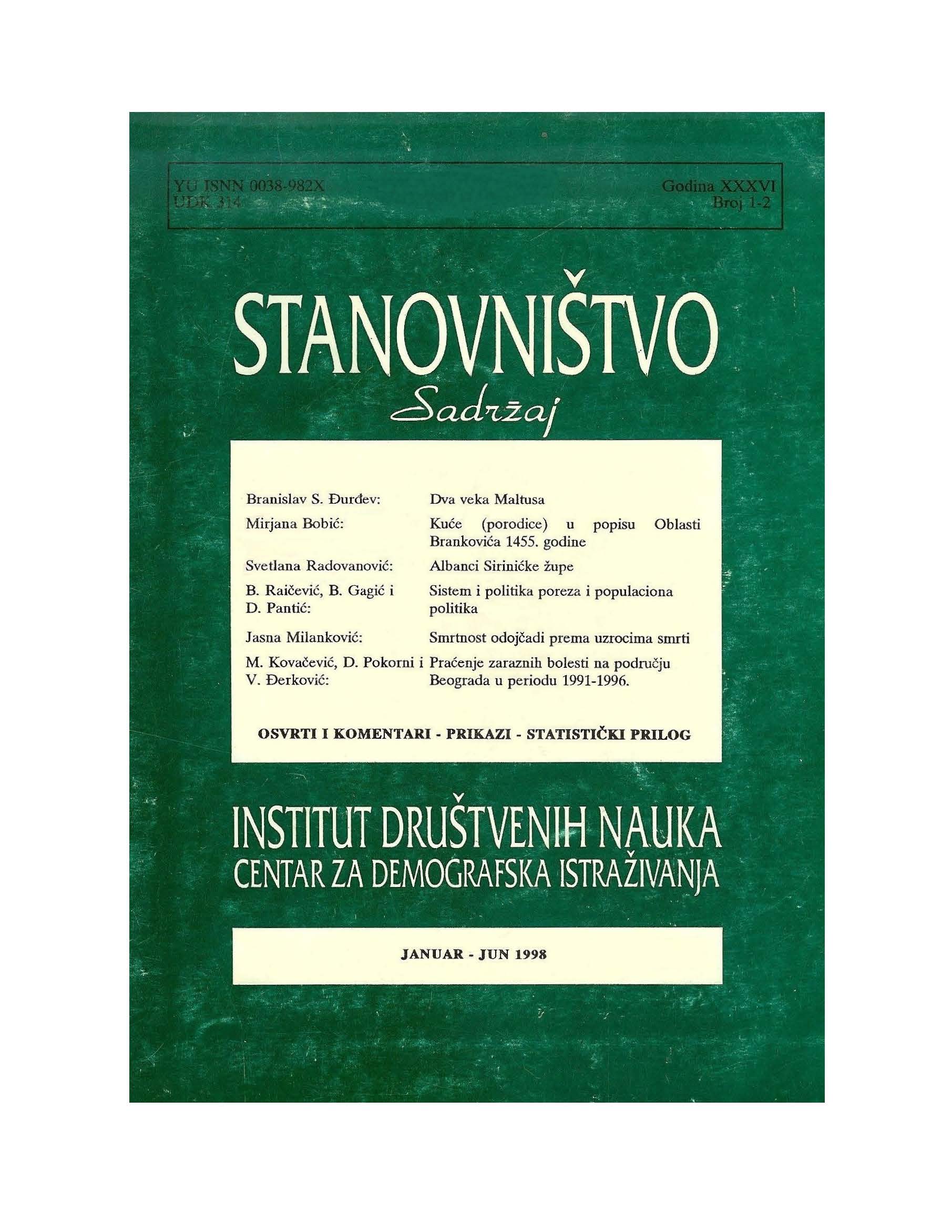Albanians of the Sirinić District
Main Article Content
Abstract
The Sirinić district is located in one of the four mountain valleys (Sirinić, Sredska, Opolje and Gora) in the Šara mountain region. Its geographic boundaries almost match the administrative borders of the commune of Štrpce. It is first mentioned in Serb manuscripts of the first half of the XIV century. The census taken in 1455 by the Turks shows a relatively high density of Serb population. The Albanians immigrated to the Sirinić district from northern Albania after the second mass migration of Serb population in 1737. They came from north and east, from southern parts of Kosovo, Kačanička gorge and the Valley of Skoplje. A larger-scale settlement of Albanians into the Šara mountain region was prevented by massive Islamization of native Serb population in the districts of Gora, Opolje and Sredska. Thus, a multi-ethnic buffer zone was formed during Turkish reign which has been basically preserved until today. For this particular reason the region has attracted interest of many domestic and foreign researchers ever since early XIX century. Elaboration of two multi-disciplinary scientific research projects by the Institute of Geography "Jovan Cvijić" of the Serb Academy of Science and Arts in the period from 1989 to 1994 was based on the same considerations. One of the projects is fully concerned with the Sirinić district and the author of this paper was asked to study migrations and the origins of Albanian population as well as to organize and conduct a population census in the commune of Štrpce.
Immigration of Albanians to the Sirinić district took place in several phases which ultimately led to the formation of five mixed Serb-Albanian settlements located between a group of four homogenous Albanian and seven such Serb settlements. Thus, a relatively stable ethnic and geographic structure was formed as early as in the XIX century. Its territorial and demographic proportions did not substantially change regardless of all tumultuous historical and political events that had since taken place. A more detailed analysis shows that the share of Albanians in total population of the district rose from about 29% in 1931 to only 33% in 1989 in spite of the natural increase in population in excess of 30 per thousand ever since the early 1980s. However, demographic growth of Albanian population remained much below the level of the biological reproduction rate due to intensive emigration i.e., a negative migratory balance ranging from 21.8 per thousand in 1961 to 26.5 per thousand in 1989. The causes for emigration were economic and, for decades, bound toward Kosovo, Western Macedonia and the Valley of Skoplje. Emigration to Turkey began in late XIX century, resumed during the Balkan Wars and was recorded again in the early 1980s (encouraged by the Balkan Treaty signed by the FPRY, Greece and Turkey) but did not much affect total demographic movement of Albanians in the Sirinić district. Economic emigration of population to Switzerland and Germany has been growing from the 1960s onward. This paper also reviews parallel existence and functioning of two crucially different homeostatic demographic systems - the Albanian and the Serb - in the same compact geographic environment. The paper also points to the preserved awareness of a fixed (tribal) affiliation and finally displays a detailed review of migratory dynamics and origins of Albanian population, number of houses (families) and the number of members of each clan in 1989.
Downloads
Article Details

This work is licensed under a Creative Commons Attribution-NonCommercial 4.0 International License.
Published by the Institute of Social Sciences - Center for Demographic Research





